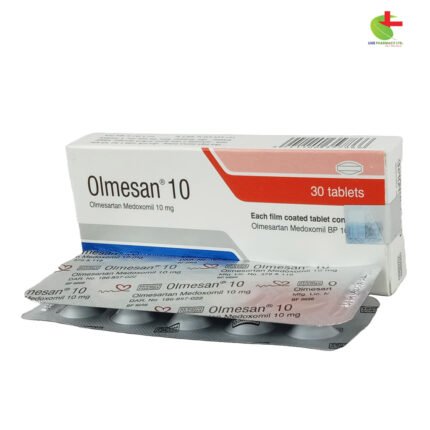Pantobex 20
50.00৳ Strip
- Pantobex is a proton pump inhibitor used to treat excessive stomach acid conditions such as peptic ulcers, GERD, and NSAID-induced ulcers.
- It reduces acid secretion by inhibiting the final step of acid production, promoting healing.
- Used in combination with antibiotics to eradicate Helicobacter pylori and manage Zollinger-Ellison Syndrome.
- Available in both oral and IV forms, it should be used under medical supervision.
 Brand
Brand
|
Beximco Pharmaceuticals Ltd |
|---|---|
 Generics
Generics
|
Pantoprazole Sodium |
 Type
Type
|
Tablet |
Indications for Pantobex
Pantobex is prescribed for the effective suppression of acid secretion in conditions such as:
- Peptic ulcer disease
- Gastroesophageal reflux disease (GERD)
- NSAID-induced ulcers
- Eradication of Helicobacter pylori (when used with antibiotics)
- Zollinger-Ellison Syndrome
Pharmacological Profile
Pantobex contains pantoprazole, a potent proton pump inhibitor (PPI) that blocks the final stage of gastric acid production by irreversibly binding to the H+/K+ATPase enzyme in gastric parietal cells. This action inhibits both basal and stimulated acid secretion for over 24 hours.
Dosage & Administration
Oral:
- Benign Gastric Ulcer: 40 mg once daily for 4 weeks; extend treatment for another 4 weeks if needed.
- Gastroesophageal Reflux Disease (GERD): 20-40 mg once daily for 4 weeks; may continue for another 4 weeks if necessary; maintenance dose is 20 mg daily, adjustable to 40 mg.
- Duodenal Ulcer: 40 mg daily for 2 weeks; extend treatment for another 2 weeks if required.
- Helicobacter pylori Eradication: 40 mg twice daily with antibiotics—Amoxicillin 1 g and Clarithromycin 500 mg, or Clarithromycin 250 mg and Metronidazole 400 mg, both for one week.
- NSAID-Induced Ulcers: 20 mg daily for patients on long-term NSAID therapy.
- Zollinger-Ellison Syndrome: Start with 80 mg once daily, adjusting dose as needed (maximum 40 mg daily for elderly); doses above 80 mg should be given in divided doses.
IV Injection:
- Duodenal and Gastric Ulcers: 40 mg once daily for 7-10 days.
- GERD with Erosive Esophagitis: 40 mg once daily for 7-10 days.
- Peptic Ulcer Rebleeding Prevention: 80 mg IV, followed by 8 mg/hour infusion for 72 hours.
- Acid Aspiration Prophylaxis: 80 mg IV every 12 hours for 24 hours, then 40 mg every 12 hours.
- Long-Term Zollinger-Ellison Syndrome Management: 80 mg IV every 12 hours, may increase to 80 mg every 8 hours if required.
Note: Always follow your healthcare provider’s guidance when using this medication.
Interactions
No significant interactions have been noted in clinical studies.
Contraindications
Pantobex is contraindicated in patients with hypersensitivity to any component of the formulation.
Side Effects
Common side effects include:
- Headache
- Diarrhea
Rare side effects may include:
- Abdominal pain
- Flatulence
- Rash
- Insomnia
- Hyperglycemia
Pregnancy & Lactation
Pantoprazole is classified as FDA Pregnancy Category B. Use during pregnancy should only be considered if clearly needed. Pantoprazole is excreted in breast milk; therefore, decide whether to continue nursing or the medication based on the drug’s benefit to the mother.
Precautions & Warnings
- Do not split, chew, or crush Pantobex tablets.
- Long-term use may lead to vitamin B12 malabsorption or increase the risk of osteoporosis-related disorders.
Overdose Effects
There are no known symptoms of overdosage. Pantobex is highly protein-bound and not easily dialyzable. Treatment is generally symptomatic and supportive.
Therapeutic Class
Pantobex belongs to the class of Proton Pump Inhibitors (PPIs).
Reconstitution
- IV Injection: Reconstitute Pantobex with 10 ml of 0.9% Sodium Chloride Injection. Administer slowly over 2-5 minutes. Use freshly prepared solutions, which can be stored at room temperature (up to 30°C) for up to 4 hours.
- IV Infusion: Reconstitute with 10 ml of 0.9% Sodium Chloride Injection, then dilute with 100 ml of 0.9% Sodium Chloride Injection, 5% Dextrose, or Lactated Ringer’s Injection. Store at room temperature (up to 30°C) for up to 4 hours before dilution and use within 24 hours.
Storage Conditions
Store in a dry place, away from light and heat. Keep out of reach of children.













Reviews
There are no reviews yet.